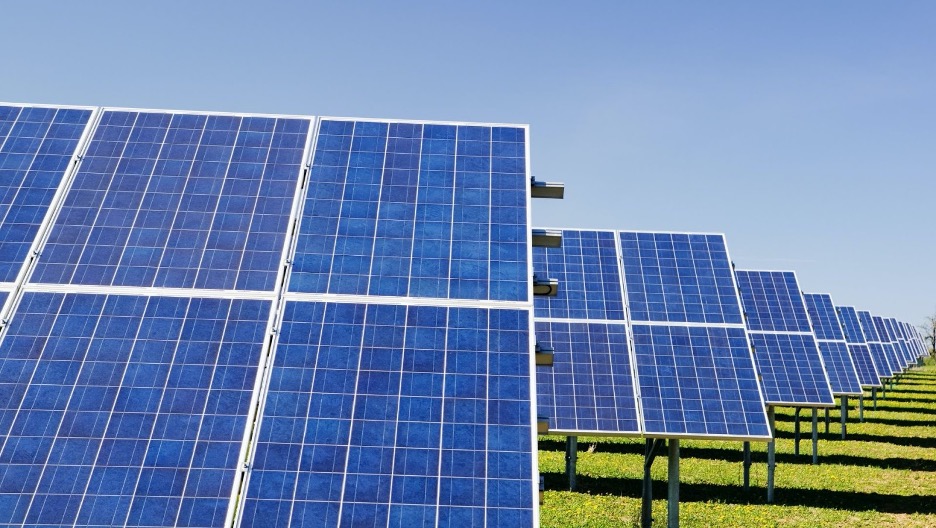What the Biden Administration’s Energy Policies Mean for Your Company’s Energy Strategy
While the United States has grown its usage of renewable energy over the past decade, the Biden Administration’s new clean energy plan doubles down on that trend by calling for increased federal support for innovative renewable energy technologies.
With this shift in the federal energy policy landscape, businesses have a unique opportunity to evaluate their energy strategies to explore the benefits of these proposed tax incentives and the decreasing cost of renewables.
“The shifts toward renewable energy policies and decreasing renewable energy prices are providing businesses with an opportunity to reduce risk by reevaluating their energy strategies,” said Mark Huston, president of Constellation’s National Retail Energy Business. “If you aren’t ready to invest in renewable energy, the reality is that you are going to find yourselves behind the leaders in your industry.”
Understanding the new administration’s energy policies
The Biden Administration’s renewable energy goals—which include getting the U.S. to complete reliance on clean electricity by 2035 and achieving net-zero emissions worldwide by 2050—are quite ambitious. While many unknowns still remain, here is what we do know about the Biden energy policies.
Within the first week of his administration, President Biden signed a series of executive orders that directed the federal government to: halt new oil and gas leasing on federal lands and waters; consider whether to adjust coal, oil, and gas royalties; and double offshore wind production.
More recently, the U.S. Department of Energy announced $128 million in funding to lower costs and speed the deployment of solar energy technologies. This commitment will accelerate the trend over the past decade, which has seen the cost for solar power drop 82% since 2010, and the costs for onshore and offshore wind drop 39% and 29%, respectively, according to the International Renewable Energy Agency.[1]
Looking forward, the current administration is expected to expand on those initial efforts by proposing a $2 trillion investment in clean energy, requiring aggressive methane pollution limits for new and existing oil and gas operations, and proposing a renewal of tax incentives for clean energy technology.
Renewable energy already makes up 11% of the total U.S. consumption, according to the U.S. Energy Information Administration.[2] With the energy policies proposed by the Biden administration, we can expect that share will only increase at an accelerated rate.

Reevaluating your energy strategy
Reevaluating your energy strategy begins with an assessment of your company’s energy impacts. Key questions to ask include how much energy your company uses, what it costs, and whether you are capitalizing on opportunities to use renewables.
While energy is among the highest business costs, most companies don’t know how to track or manage it effectively. But understanding your company’s energy impact is essential to aligning your strategy with the current U.S. policies.
Taking advantage of clean energy often requires a detailed understanding of new financing options. For instance, power purchase agreements often require companies to commit to buying clean power at a set price for a period of 10 to 20 years. Many business leaders struggle to see the benefits of such long-term financial commitments.
While the reasons why organizations may choose to include renewables in their energy mix vary, most will benefit from such a move.
“Colleges and universities often include significant renewable energy in their energy mix because students have high expectations for their institutions,” Huston said. “Meanwhile, government offices often include renewable sources in their energy strategies to show a tangible commitment to the environment.”
“Constellation can help companies understand how off-site renewable energy, on-site solar facilities, or other renewable sources fit their budgets and sustainability goals.”
Working with an energy expert
Developing an energy strategy that aligns with the new administration’s policy proposals comes with challenges. But these hurdles are not insurmountable.
“Teaming with an energy solutions provider who understands the renewable energy landscape and possesses the data, resources and expertise you need to adapt is critical,” Huston said. “We pride ourselves on simplifying complex energy challenges and helping customers identify the renewable energy option that meets their sustainability goals while managing costs.”
When a national company sought a solution to power hundreds of company-operated stores in Illinois with 100% renewable power, it turned to Constellation’s Offsite Renewables (CORe) product to source 48,000 megawatt hours of carbon-free electricity, annually, from an in-state wind farm.
The renewable energy landscape is changing, but Constellation stays apprised of the latest trends to provide consistent support for businesses who don’t want to overlook the wide-ranging benefits of renewables. Constellation’s CORe product increases access to offsite renewable energy projects through simple retail power contracts and Renewable Energy Certificates (RECs). This solution is just one of many options that can help companies to source renewable energy to support their sustainability goals and become leaders in their industry.
To learn more about Constellation’s Renewable energy solutions, click here.
To learn more about specialized energy for your business, visit your association’s site.
[1] Renewables Increasingly Beat Even Cheapest Coal Competitors on Cost. Available: https://www.irena.org/newsroom/pressreleases/2020/Jun/Renewables-Increasingly-Beat-Even-Cheapest-Coal-Competitors-on-Cost. [Accessed: 31-Mar-2021]
[2] “U.S. Energy Information Administration – EIA – Independent Statistics and Analysis,” Renewable energy explained – U.S. Energy Information Administration (EIA). Available: https://www.eia.gov/energyexplained/renewable-sources/. [Accessed: 31-Mar-2021]


